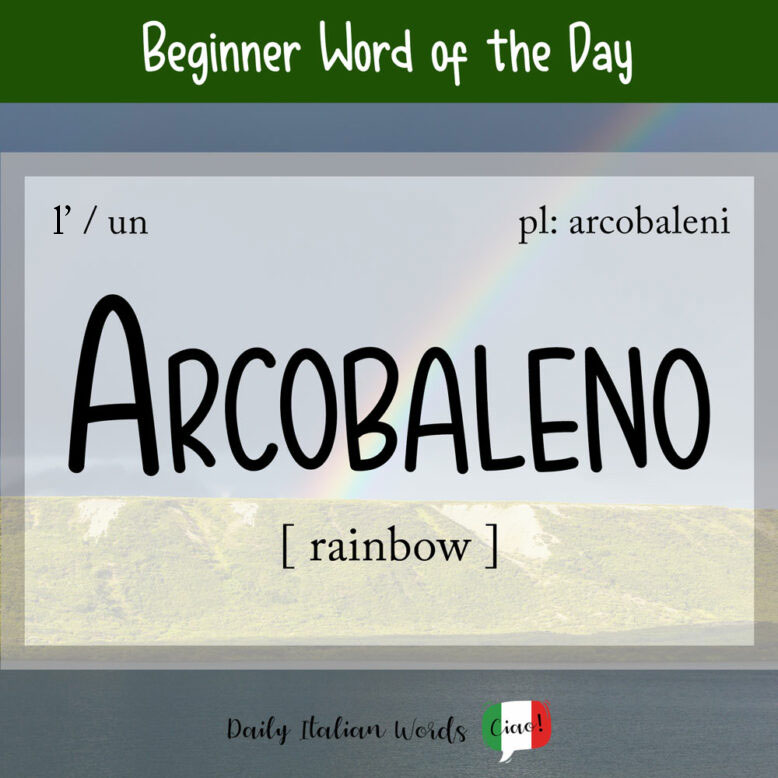The Italian word for rainbow is arcobaleno (plural: arcobaleni).

l’arcobaleno
un arcobaleno
gli arcobaleni
degli arcobaleni
It is composed of two words: arco (arch) and baleno (flash, flare).
Ho visto un arcobaleno dopo il temporale.
I saw a rainbow after the storm.
The seven colours of the rainbow (sette colori dell’arcobaleno) are as follows:
- violetto = violet
- indaco = indigo
- azzurro = blue
- verde = green
- giallo = yellow
- arancione = orange
- rosso = red
A rainbow is formed when white light (luce) is split into its various individual wavelengths (lunghezze d’onda), forming a spectrum (spettro) of colour. For the light to split, a prism (prisma) such as water droplets in the atmosphere (atmosfera) are required. The longest wavelengths are red whereas the shortest are violet. The sequence (sequenza) of the colours never changes.

In Italy, the acronym RAGVAIV (or RoAranGiVerTurInVio) is often used to remember the colours of the rainbow, but if you are trying to help your children remember, why not give this nursery rhyme a try! (Note however that violet and indigo have been substituted by blue and turquoise!)
Sette Colori Dell’Arcobaleno
Sette colori dell’arcobaleno
Dopo la pioggia vien sempre il sereno
C’è il rosso come le ciliegie
come il melone
Però tutte le arance sono
arancione
C’è il giallo come le banane
come i limoni
C’è il verde proprio come quello
dei peperoni
C’è poi l’azzurro
come il colore del mare
Il blu del cielo
che fa sempre sognare
E c’era un fata
che amava il turchino
Così colorata apparì al burattino
Seven colours of the rainbow
After the rain there is always the clear sky
There is red like cherries
like melons
But all the oranges are
orange
There is yellow like bananas
like lemons
There is green like the colour
of peppers
Then there is blue
like the colour of the sea
The blue of the sky
that always makes us dream
And there was a fairy
who loved turquoise
She appeared so colourful to the puppet.
Heather Broster is a graduate with honours in linguistics from the University of Western Ontario. She is an aspiring polyglot, proficient in English and Italian, as well as Japanese, Welsh, and French to varying degrees of fluency. Originally from Toronto, Heather has resided in various countries, notably Italy for a period of six years. Her primary focus lies in the fields of language acquisition, education, and bilingual instruction.


